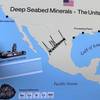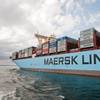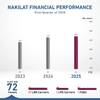Training Tips for Ships - Tip #20: Training in the Age of Data
As we greet 2021, it seems fitting to address a “big” topic - a topic that is ultimately going to change everything, including (and perhaps especially) training. The topic is “big data”. The goal of today’s Training Tip for Ships is to get us thinking about big data in training. If we understand it, we can lay the groundwork to take advantage of it.
We are in the data age – and this is especially important for training. Everything we do can be done more efficiently and more effectively by understanding it more deeply. In the case of training, how do we understand what training works and what does not work? How do we understand the most reliable and efficient paths to closing knowledge gaps and increasing retention? How do we best understand how to translate knowledge to practice? Which employees are likely to be our safest? How do we identify those we wish to develop as leaders? Until now, intuition, anecdotal information and experience have been our best available guides. But now we have something far more powerful to answer all of these questions and many many others.
Big data. Big data is already proven in so many domains. It is used to make firefighting safer and more effective. It is used to identify fraudulent financial transactions. And big data is being used in many ways and to remarkable effect to save us from this pandemic. Similarly, the opportunity for big data in training is enormous.
Big data is really about two things. First, it is about the data itself and the granularity, volume and veracity of this data. And second, it is about mining our data ro reveal patterns that are not otherwise visible. We can then use knowledge of those patterns to make better, more deeply informed decisions.
What data should we be gathering now to help support future training optimization? The potential sources are bountiful. There are millions of trainees and experienced mariners around the world using a wide variety of technology every day in their training and work. Each of these technologies can be a source of rich data. We can collect information from simulation training and assessment systems, online learning systems, competency management systems, and recordings from vessel operations. We could collect “macro” data such as assignment, exam and course grades, and even information from incident reports. We could collect “micro” data such as how long trainees spend on learning materials, how long they spend answering each test question, and how they navigate through the learning content. We could collect the stream of real-time navigational decisions and actions, equipment control input, and current conditions. Each of these has the opportunity to reveal how seafarers learn and operate. In a short time we could have a very deep and very wide pool of data to mine for insights.
So how, specifically, do we collect this data to establish a base upon which we can ultimately gain insights? The most direct path is to consider big data in every technology procurement choice we make. We must consider this every time we procure electronic training, administration and operational systems such as simulators, learning management systems, skill assessment systems, bridge navigation systems, HR and crewing systems, and so on. Ask the vendors what data the system is able to record and expose in the effort to build a robust and granular dataset for future data mining. It takes years to build these datasets, so the time to begin is now.
Once we have a sufficient initial data set, how do we mine it for insights? The most powerful technique is a form of artificial intelligence called machine learning. This may sound difficult or complex, and in some sense it is. But never fear. There are tools available that make it relatively easy to derive insights from big data. We do not need to be experts. The next edition of Training Tips for Ships will look at some of the insights we can hope to gain by using tools to collect and examine our organization’s big data.
Until then, keep healthy and sail safely.










